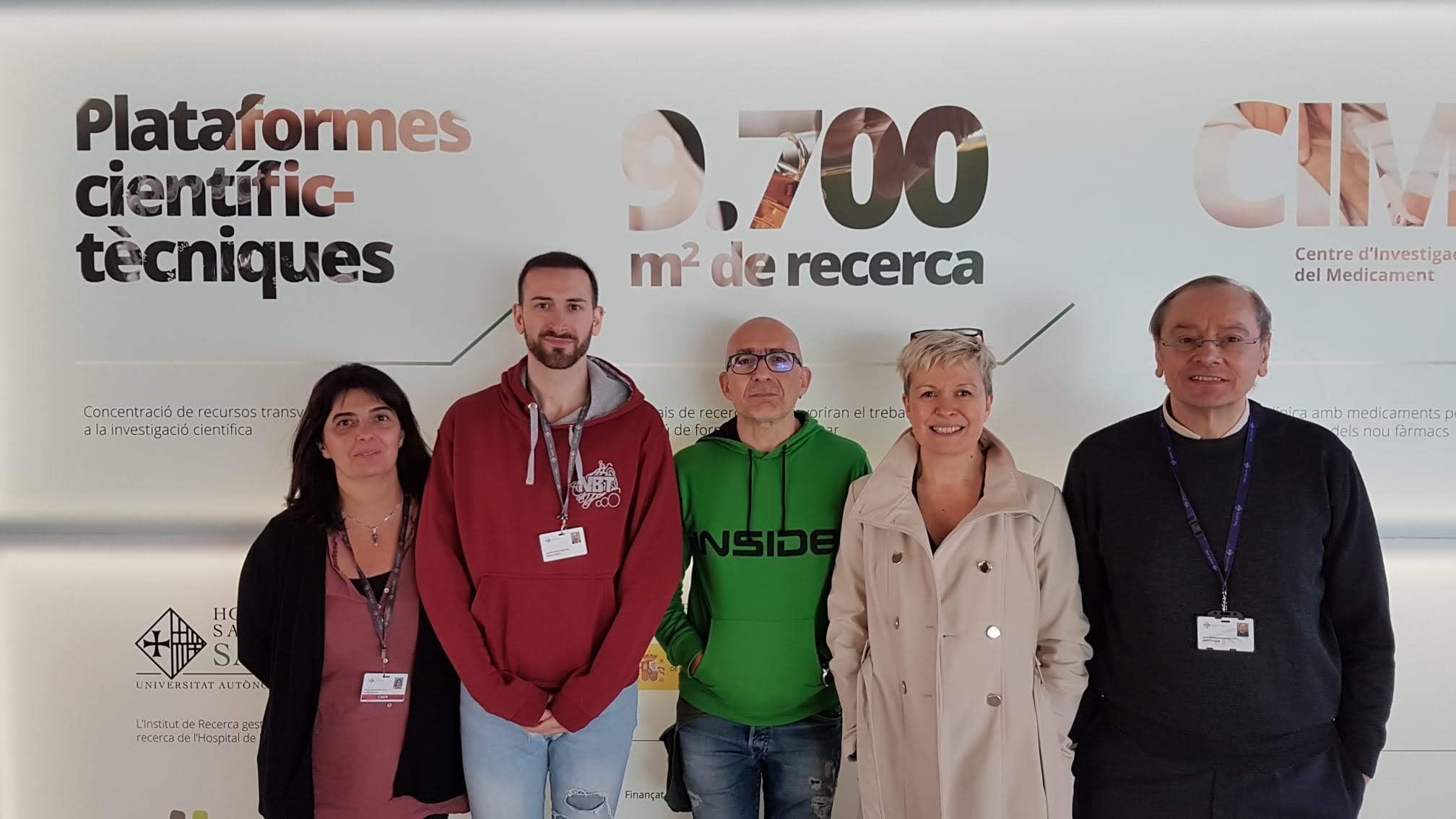
Researchers of NANBIOSIS Unit 1 and NANBIOSIS Unit 18, led by Ramón Mangues, have published the article titled CXCR4-targeted nanocarrier achieves highly selective tumor uptake in diffuse large B-cell lymphoma mouse models .
One-third of diffuse large B-cell lymphoma patients are refractory to initial treatment or relapse after rituximab plus cyclophosphamide, doxorubicin, vincristine and prednisone chemotherapy. In these patients, CXCR4 overexpression (CXCR4+) associates with lower overall and disease-free survival. Nanomedicine pursues active targeting to selectively deliver antitumor agents to cancer cells, a novel approach that promises to revolutionize therapy by dramatically increasing drug concentration in target tumor cells. In the study carried out at NANBIOSIS ICTS the resarchers intravenously administered a liganded protein nanocarrier (T22-GFP-H6) targeting CXCR4+ lymphoma cells in mouse models to assess its selectivity as a nanocarrier, by measuring its tissue biodistribution in cancer and normal cells. No previous protein-based nanocarrier has been described to specifically target lymphoma cells. T22-GFP-H6 achieved a highly selective tumor uptake in a CXCR4+ lymphoma subcutaneous model, as detected by fluorescent emission. We demonstrated that tumor uptake was CXCR4- dependent because pretreatment with AMD3100, a CXCR4 antagonist, significantly reduced tumor uptake. Moreover, in contrast to CXCR4+ subcutaneous models, CXCR4- tumors did not accumulate the nanocarrier. Most importantly, after intravenous injection in a disseminated model, the nanocarrier accumulated and internalized in all clinically relevant organs affected by lymphoma cells, with negligible distribution to unaffected tissues. Finally, the researchers obtained antitumor effect without toxicity in a CXCR4+ lymphoma model by T22-DITOX-H6 administration, a nanoparticle incorporating a toxin with the same structure as the nanocarrier. Hence, the use of T22-GFP-H6 nanocarrier could be a good strategy to load and deliver drugs or toxins to treat specifically CXCR4-mediated refractory or relapsed diffuse large B-cell lymphoma without systemic toxicity.
The bioluminescent follow-up of cancer cells and nanoparticle biodistribution and toxicity studies has been performed in the ICTS NANBIOSIS, using its unit 18 of Nanotechnology of CIBER-BBN and Hospital Sant Pau The Protein production has been partially performed by the Protein Production Platform (PPP) Unit 1 of ICTS NANBIOSIS of CIBER-BBN and IBB-UAB.
Article of reference:
Aïda Falgàs, Victor Pallarès, Ugutz Unzueta, María Virtudes Céspedes, Irene Arroyo-Solera, María José Moreno, Alberto Gallardo, María Antonia Mangues, Jorge Sierra, Antonio Villaverde, Esther Vázquez, Ramon Mangues, and Isolda Casanova. A CXCR4-targeted nanocarrier achieves highly selective tumor uptake in diffuse large B-cell lymphoma mouse models. Haematologica 2019
doi:10.3324/haematol.2018.211490








